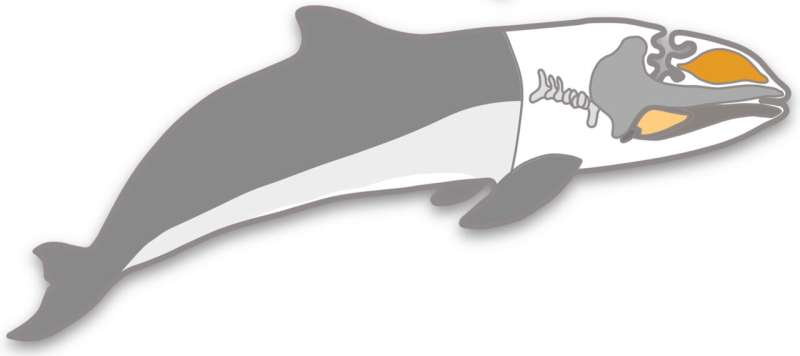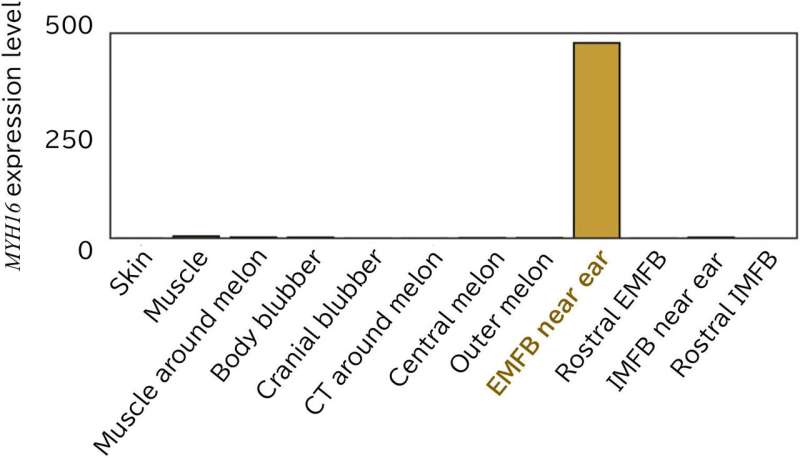This article has been reviewed according to Science X's editorial process and policies. Editors have highlighted the following attributes while ensuring the content's credibility:
fact-checked
trusted source
proofread
Toothed whale echolocation organs evolved from jaw muscles, new research suggests

Dolphins and whales use sound to communicate, navigate and hunt. New research suggests that the collections of fatty tissue that enable toothed whales to do so may have evolved from their skull muscles and bone marrow.
Scientists at Hokkaido University determined DNA sequences of genes which were expressed in acoustic fat bodies—collections of fat around the head that toothed whales use for echolocation. They measured gene expression in the harbor porpoise (Phocoena phocoena) and Pacific white-sided dolphin (Lagenorhynchus obliquidens). Their findings were published in the journal Gene.
The evolution of acoustic fat bodies in the head—the melon in the whale forehead, extramandibular fat bodies (EMFB) alongside the jawbone, and intramandibular fat bodies (IMFB) within the jawbone—was essential for sound use such as echolocation. However, little is known about the genetic origins of those fatty tissues.
"Toothed whales have undergone significant degenerations and adaptations to their aquatic lifestyle," said Hayate Takeuchi, a Ph.D. student at Hokkaido University's Hayakawa Lab and first author of the study. One adaptation was the partial loss of their sense of smell and taste, along with the gain of echolocation to enable them to navigate in the underwater environment.

The researchers found that genes which are normally associated with muscle function and development were active in the melon and EMFBs. There was also evidence of an evolutionary connection between the extramandibular fat and the masseter muscle, which in humans connects the lower jawbone to the cheekbones and is a key muscle involved in chewing.
"This study has revealed that the evolutionary tradeoff of masticatory muscles for the EMFB—between auditory and feeding ecology—was crucial in the aquatic adaptation of toothed whales," said Assistant Professor Takashi Hayakawa of the Faculty of Environmental Earth Science, who led the study.
"It was part of the evolutionary shift away from chewing to simply swallowing food, which meant the chewing muscles were no longer needed."
Analysis of gene expression in the intramandibular fat detected activity of genes related to immune functions, such as the activation of some elements of the immune response and regulation of T cell formation.
The Stranding Network Hokkaido (SNH) is another important aspect of the research, as the samples used in this study were collected by them. SNH has collected specimens of stranded whales in the seashore and river mouth in Hokkaido.
"Long-term communication with local people and communities in Hokkaido has enabled researchers to conduct various studies of whale biology, including our surprising findings," said Professor Takashi Fritz Matsuishi, the director of SNH.
More information: Hayate Takeuchi et al, A tradeoff evolution between acoustic fat bodies and skull muscles in toothed whales, Gene (2024). DOI: 10.1016/j.gene.2024.148167
Provided by Hokkaido University





















